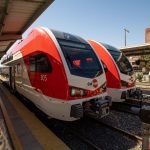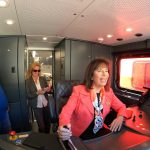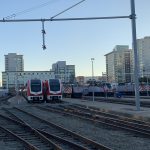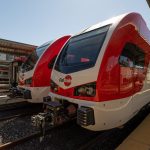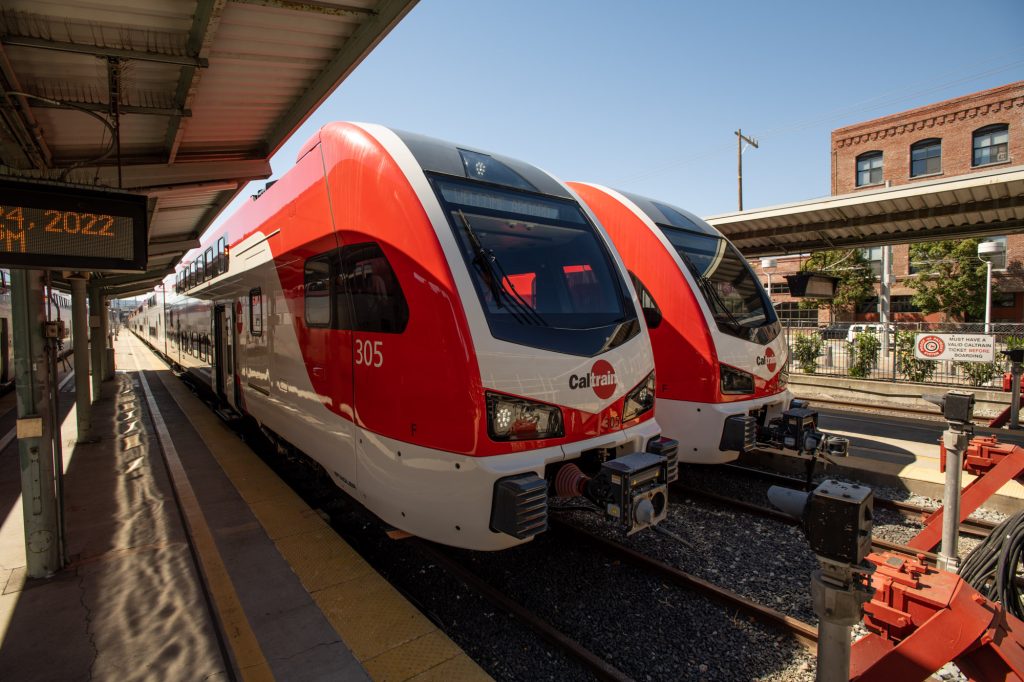
Caltrain new electric rolling stock will enter operation from 2024, the company has announced during the first public event unveiling its new trains where federal, state, regional, local officials and community members attended, on September 24.
Prior entering services, the new Stadler electric trains are tested to ensure they and the infrastructure they will rely on are in good working order.
Each 7-car train will provide increased capacity compared to current 5-car trains. The new trains also accelerate and decelerate faster than their diesel alternatives, which must be pulled by a locomotive. This will allow Caltrain to expand its service levels beyond the current 104 trains every weekday.
The trains were built by Stadler US at their facility in Salt Lake City, Utah. After they were assembled, they were sent to a test facility in Pueblo, where they were tested at high speeds under numerous conditions as required by the Federal Railroad Administration. The trains were tested for braking, propulsion, ride quality, noise and vibration, door operation, positive train control and electromagnetic interference over the course of eight months.
The new high-performance trains will offer a better service to Caltrain passengers. They will generate much less noise than their diesel equivalent, making the trip more enjoyable both for riders and residents that live near Caltrain tracks. The new vehicles also offer enhanced amenities, including new digital onboard displays, power outlets at each forward-facing seat, a new seat color palette selected by the public, energy-efficient lighting, coat hooks, security cameras, and expanded storage under the cantilevered seats.
The new ne electric rolling stock is part of Caltrain electrification project along the corridor from the San Francisco Station at 4th and King Streets to approximately the Tamien Station in San Jose, replacing diesel-hauled trains. The project requires an additional USD 462 million over USD 1.98 billion initial estimation. The company is working with its funding partners, as well as its federal and state legislative delegations to fill the funding gap.
The electrification will help meet ambitious regional and state climate action goals by reducing the greenhouse gas emissions, improving air quality and relieving traffic congestion. Additionally, electrified service will advance equity along the corridor by reducing noise and air pollution while increasing access for priority equity neighbors. It will also set the framework for California’s future high speed rail network.
“The arrival of these new electric trains marks an exciting step toward providing greener, easier transportation options for Californians. Caltrain’s electrification initiative will mean quieter neighborhoods, cleaner air and faster commutes for working families. It has been my privilege to fight alongside the entire Bay Area delegation to secure the federal resources Caltrain needs to realise its vision of a fully electrified rail corridor from San Francisco to San Jose,” Nancy Pelosi the Speaker of the House of Representatives said.
Share on:



